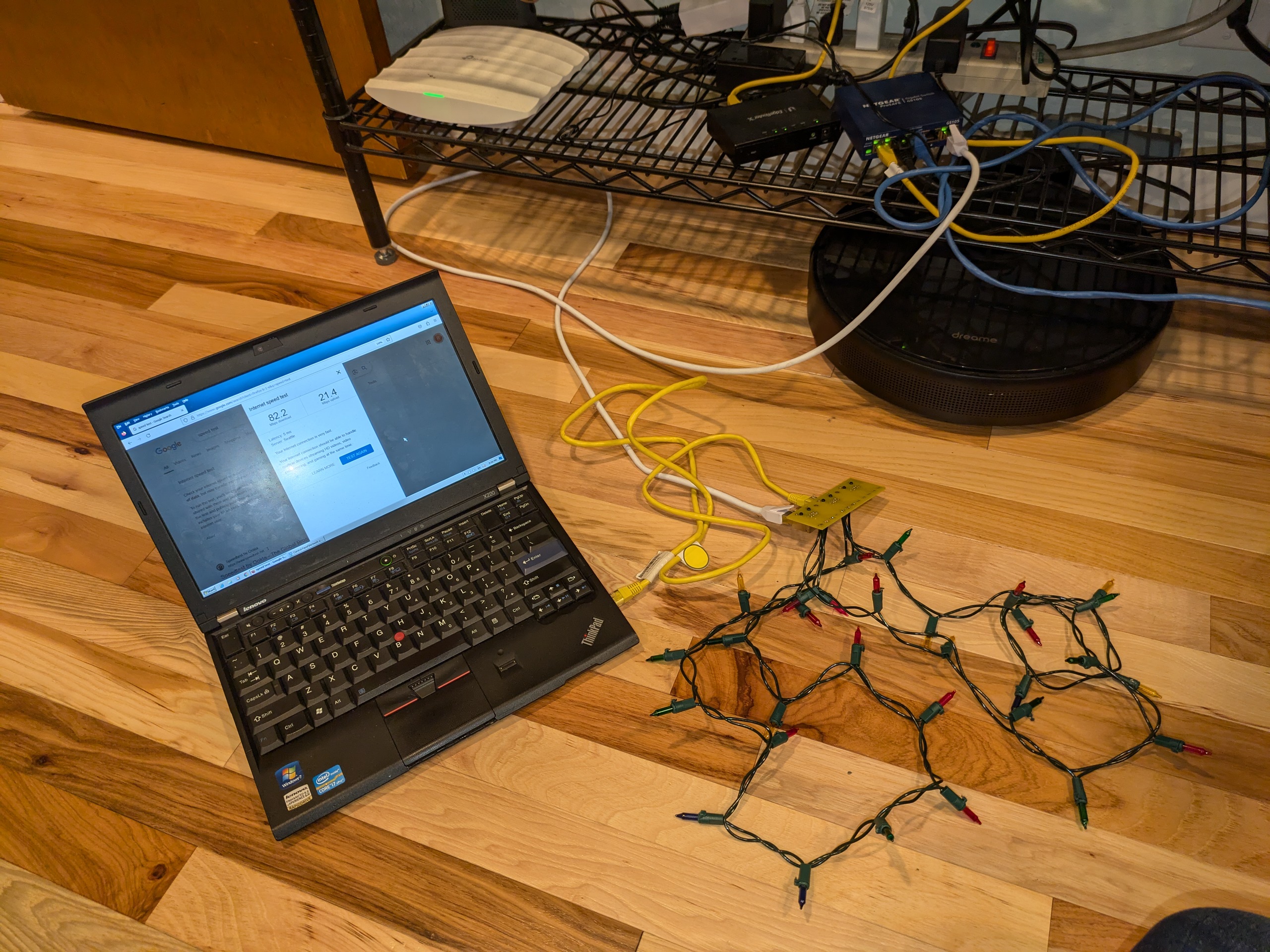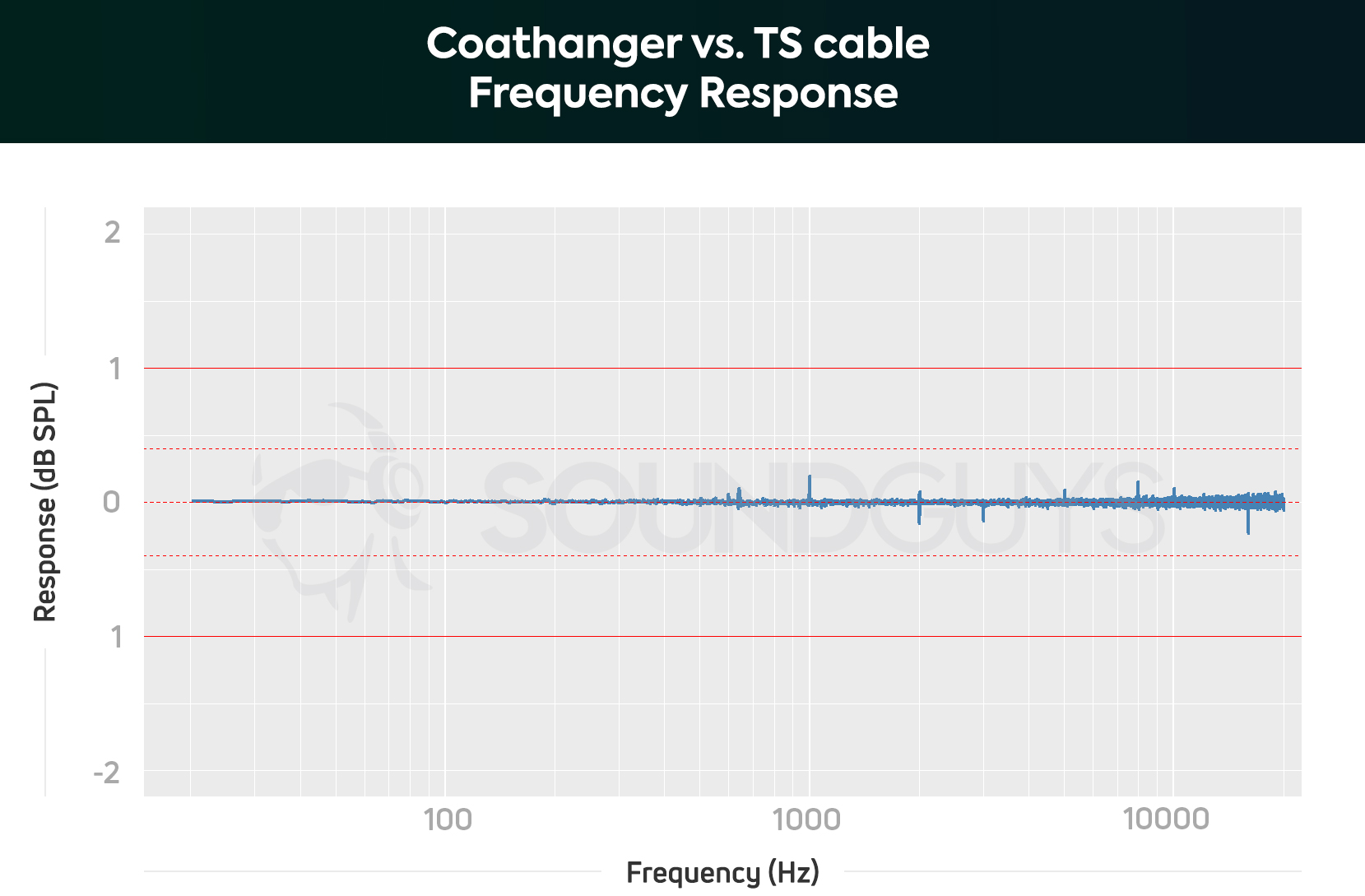Bad Idea: Ethernet Over Christmas Lights
2025
I was talking to someone a few years ago who was convinced that they were getting slow transfer speeds between their router and desktop because they were using CAT-5 rather than CAT-6 Cable. I commented that I thought that was extremely unlikely because of how robust 1000BASE-T and 100BASE-T ethernet are and that you could probably get away with running ethernet through christmas lights (the old fashioned incandescent kind). I was cleaning my lab out and came across both Christmas lights and an ethernet breakout board and decided to see if it would really work, and it did! At least at 100BASE-T speed; I did not hook up all four pairs which limits operation to 100BASE-T.

Successful Speed Test (Uplink limited by ISP)
Short runs of non-ideal cabling are tolerable in many different signaling applications. When a system is designed to work over 100m with an insertion loss of, say, 20 dB at 50 MHz, you can get away with a couple meters of very non-ideal cable. You can cut a cable cable TV coax and splice it by separately twisting the shields and center conductors together and still get an acceptable TV signal (and cable internet). You can run ADSL over wet string. Cabling quality sometimes doesn't matter at all: while microphone cable quality can be important for avoiding noise, speaker cable quality matters very little. Thin wires will burn off more power as heat and perhaps make the speakers barely perceptibly quieter, but you aren't going to notice a difference in the frequency response of a short run of copper wires and a short run of coat hangers.

Coathanger Frequency Response Comparison from SoundGuys
Most strands of incandescent Christmas lights have three wires: Line, Neutral, and series bulb. Some number of bulbs are connected in series between the line and neutral wires. This connection is hidden through the clever construction of the cable. At each bulb, two wires will pass by without connecting to the bulb and one wire will be terminated through the base of the bulb putting the bulb's filament in series with this single wire. At the beginning of a series run of bulbs (two series runs per strand is common), the series bulb wire is connected to line and at the end of the run after, say, 50 series bulbs, the other end is connected to neutral. With this wiring scheme, strings of lights can be connected one after the other without a significant impact on brightness.
Each of the two Ethernet pairs is formed from a series bulb wire and either a line or neutral wire. The remaining wire was discarded. Because one side of the pair passes through bulbs, there will be massive resistive imbalance with this setup, and any PoE device would fail to operate due to transformer saturating from all the current coming though only one wire in each pair.
Overview of Why This is a Bad Idea:
- Christmas light wires are too large to directly crimp into RJ45 (8P8C) connectors.
- The length of your ethernet run will be severely limited due to the right resistance and probably high Near End Crosstalk (NEXT) of christmas lights.
- The Christmas lights are probably radiating a bunch of broadband noise.